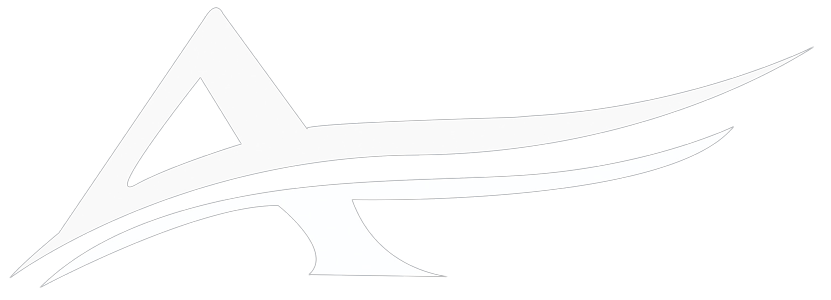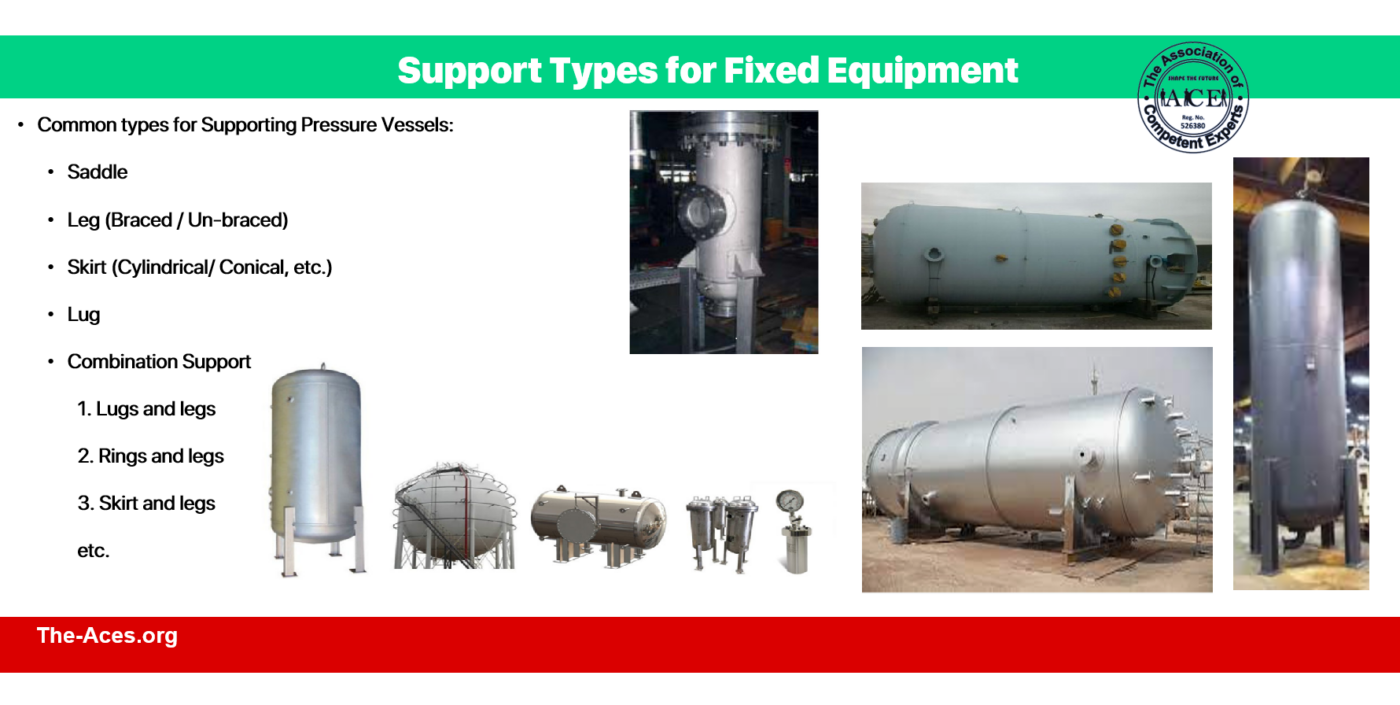
1- Vertical Equipment
Leg:
-
Application: Small vertical drums to very large vessels and spheres up to 80 feet in diameter such as Spherical Pressurized Storage Tanks
- The maximum ratio of support leg length to drum diameter is typically 2:1.
-
Cross bracing between the legs is typically used to help absorb wind or earthquake loads, specially for leg height more than 7 ft.
- More common in chemical industry
Lug:
- Application: Small to medium diameter Vertical Vessel (1 to 10 ft.)
- Light weight to heavy weight Application
- Reliable support
- Height-to-diameter ratios in the range of 2:1 to 5:1.
- The bolt holes are often slotted to permit free radial thermal expansion of the drum
Skirt:
- Application: Tall Tower
-
A support skirt is a cylindrical/ conical shell section that is welded either to the lower portion of the vessel shell or to the bottom head (for cylindrical vessels).
- Skirts are welded to the vessel near the mid-plane of the shell.
- It is normally not necessary for the skirt bolt holes to be slotted
-
The skirt is normally long enough to provide enough flexibility so that radial thermal expansion of the shell does not cause high thermal stresses at its junction with the skirt
- More common in refinery industry
2- Horizontal Equipment
Saddle:
-
One saddle support is normally fixed or anchored to its foundation. The other support is normally free to permit unrestrained longitudinal thermal expansion of the drum
- Number of Saddles: 2
Angle/ Nothing:
-
Buried pressure vessels may be supported with two longitudinal angles to prevent from additional rotation during installation
Leg:
- It is not common but horizontal vessels may be supported with 4 legs

